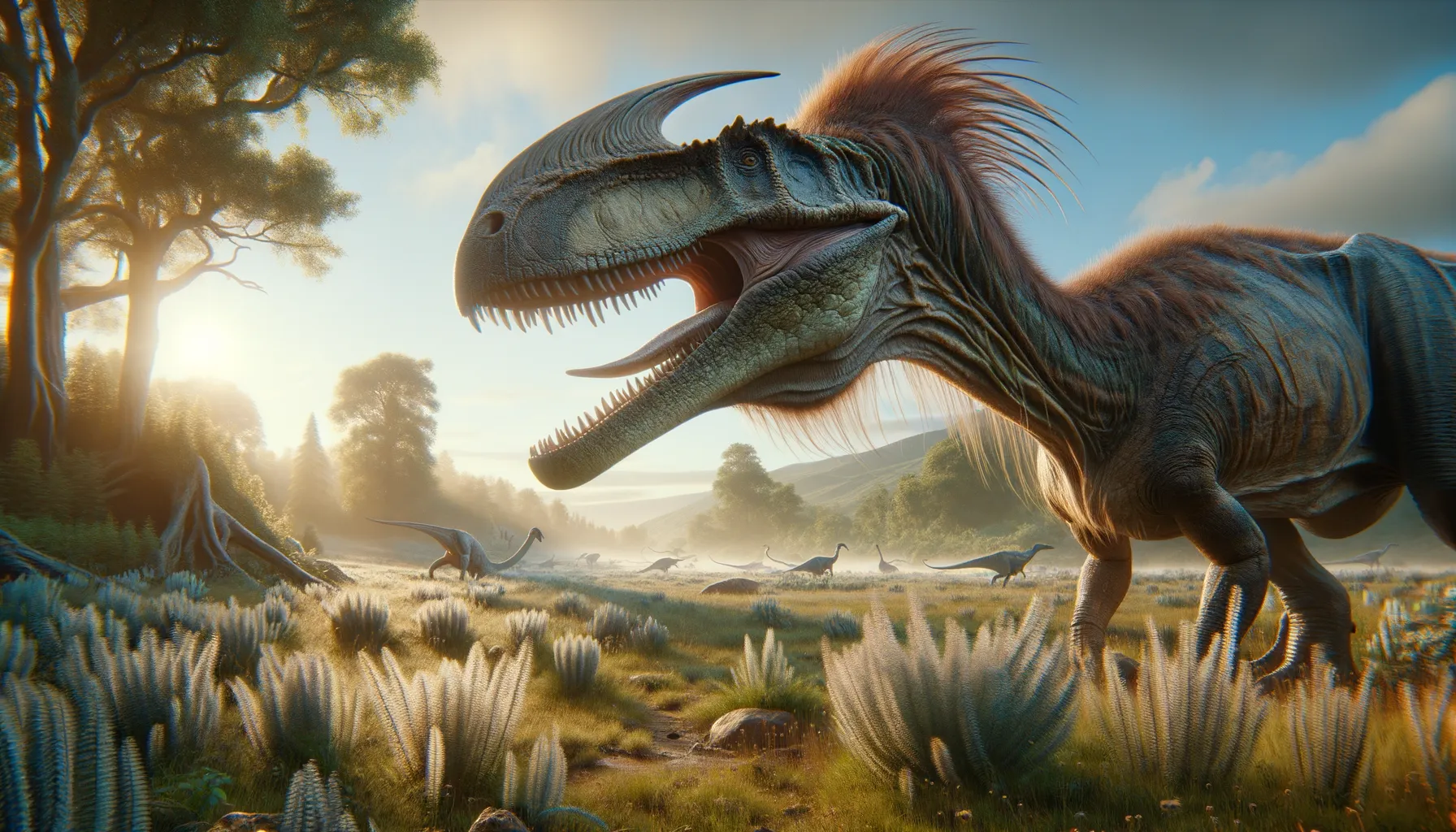
Diclonius
Master of the ancient herbivore kingdom!
Period
Cretaceous
Length
Roughly 30 feet long.
Height
Around 10 feet tall.
Weight
Approximately 1 ton.
Diclonius was a herbivorous dinosaur that thrived during the Cretaceous period. With its impressive size and characteristic duckbill, it roamed the lush landscapes of prehistoric times, likely seeking out abundant plant life. This dinosaur is noteworthy for its many teeth adapted for grinding plants, providing insights into its pivotal role in its ecosystem. Fossils of Diclonius have been primarily found in North America.
Diet
Diclonius was a herbivore, primarily feeding on a diverse range of plant life. Its numerous teeth were suited for grinding, allowing it to process fibrous vegetation efficiently.
Hunting
Diclonius did not hunt, as it was a plant-eater. Instead, it likely roamed areas rich in vegetation, using its keen senses to locate food.
Environmental challenges
Diclonius faced numerous environmental challenges, including fluctuations in climate and food availability. Competition with other herbivorous species might have influenced its feeding habits and habitat preferences. Natural predators also posed a constant threat, necessitating strategies for avoidance and defense. Additionally, changes in vegetation could have required adaptations in its diet over time.
Speed
Moderate speed, typical for its size and structure.
Lifespan
Estimated to be around 20 to 30 years.
First discovery
Identified in the late 19th century.
Fun Facts
- Diclonius was a herbivorous dinosaur that roamed the Earth during the Late Cretaceous period.
- It's famous for its large crested skull, which made it stand out among other dinosaurs.
- The name 'Diclonius' means 'double sprout', referring to the two distinct projections on its skull.
- While Diclonius fossils are rare, they provide valuable insights into the diverse dinosaur ecosystems that existed millions of years ago.
- Diclonius is believed to have lived in what is now North America, enjoying a lush, plant-rich habitat.
- Despite being part of early dinosaur discoveries, it remains a bit of a mystery due to the limited fossil record.
Growth and Development
Growth of Diclonius was steady, with juvenile dinosaurs requiring time to reach their massive adult size. The development might have included phases of rapid growth during periods with abundant food. Parental guidance could have played a role in early survival, as protection from predators was important. Full maturity would have been reached after several years, signifying a readiness to face the challenges of its ecosystem.
Habitat
Diclonius inhabited lush environments with abundant vegetation, likely favoring floodplains and forested areas. These regions provided ample food resources necessary for its survival. The dinosaur's adaptability allowed it to thrive in various conditions within its Cretaceous habitat. Environmental diversity might have influenced the distribution and life strategies of Diclonius.
Interaction with other species
Diclonius coexisted with a variety of other dinosaur species, forming a complex ecosystem. Mutual interactions with other herbivores could have affected resource distribution. Predatory dinosaurs posed threats, leading to defensive strategies. Social behaviors with its own kind might have included group foraging and protection tactics.
Natural lifespan
Its lifespan naturally spanned up to three decades.
Reproduction
Reproduction involved laying of eggs, likely in carefully selected nesting sites. Parental care might have ensured the protection and development of hatchlings. The lifecycle was characterized by cycles of growth, maturation, and eventual reproduction. Environmental factors influenced reproduction rates and success.
Social behaviour
Diclonius might have displayed social behaviors such as group living, enhancing protection and foraging efficiency. Communication through visual and auditory signals could have facilitated interactions. Group dynamics likely influenced its strategies for dealing with environmental challenges. Hierarchies or family units might have existed within its social structures.
Fossil locations
Fossils of Diclonius have predominantly been discovered in North America. These findings contribute valuable insight into the distribution and habitat of this dinosaur. Fossil sites have helped reconstruct its environmental context and behavioral patterns.
